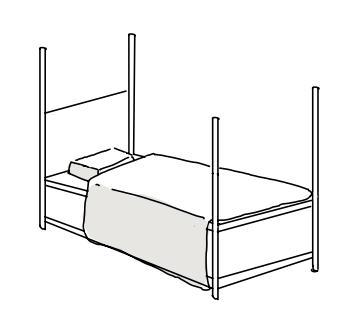An Overview of Football’s Modern NFL
Nothing is more within the modern American tradition than watching and playing football. For at least the past 50 years, American football has been a constant of entertainment and joy for the American People. No matter how bad things may be, whether it be the economy, politics, or weather disasters, the National Football League (NFL) has millions still tuning in to watch their vicious sport. Although they have bettered their practices and updated their safety gear to provide players with more physical protection, the nature of the game itself may still be detrimental to its success. The game of football deteriorated from a traditional “stadium and sport” to what appears to be the modern colesseum chock full of gladiators.
The dream for people aspiring to play in the NFL may be just that, but people also want to make a lot of money while they do it. That’s the goal for most players. They care about their bottom line. Within the past 18 years, the NFL has raked in profits exceeding 10 billion dollars, from 4.28 billion in 2001 to an astounding 16 billion in 2018. Around half of this money is distributed to each of the 32 teams every year, and furthermore, 48% of that money reaches the players while 52% goes to the owners. And yes, every year, football fans protest (albeit mildly) how these players are not getting what they deserve, and how the League is not giving their fair share. Despite the NFL brushing off these claims, the fans are probably right: NFL players need to be paid more for what they do.
Every year, players enter the ‘Gridiron’ and engage in a physical battle for three hours weekly, for 18 plus weeks, on top of practices where players commonly get injured. Injuries, wear, and tear (literally) have taken their physical toll on players. Not to mention, players’ mental health will likely deteriorate due to how consistently they receive blows to the head, and a large number of players will likely develop CTE in the future. CTE is a degenerative brain disease that causes a range of negative mental problems including rage, impulsivity, depression, dementia, memory loss, confusion, among other things. The pure nature of football is brutal, violent, and frankly, inhumane.
Another detail of physical injury that players, typically large linemen, have to deal with, is heart disease. Offensive and defensive linemen were found to have three times the risk of dying from heart disease when compared to other football players. The only reason NFL players got so big is because the League changed the rules in the 80s, making blocking below the waist illegal. This was a good rule change, but the alternative of increased risk of heart disease is not much better. Either way, players will be in harm’s way, which again points to the fact that the nature of football is plain dangerous.
The past couple of years have seen players bring up disputes about their contracts, saying they are not being paid at an adequate level. They are seeing the team owners reign in larger and larger profits, while they are barely being paid in a similar fashion. Veterans ask for more money, so one-year and two-year players may want more money too once they see their teammates walk away from the table with multi-million dollar deals.
Football is otherwise unsustainable because the public is becoming more and more aware of how bad football actually is. Last year, around 30,000 fewer high school students played football, according to the National Federation of State High School Associations. Now, this may seem like a small number compared to the one million students who did play, but taking into account how so many reports and studies have found what they have found shows that these 30,000 could be the first group of many groups that choose not to play football.
American football is a sport that relies on having people who have little to no regard for their personal health to compete in a savage environment. People will always be drawn to football and things like it because of how primal it is. It will consume those who play. Football may outlast the next 20 years (and maybe even past that), but it will not outlast an increasingly informed generation that knows what is good for them. Not shockingly, a study by led by both Carnegie Mellon University and the University of Rochester Medical Center suggested that even typical hits sustained from playing a single season of college football can lead to structural changes in the brain. If one watched a single college player in every practice and game (pretty much any time they put their pads and helmet on) and counts each hit the player generally sustains, they would see how little it takes for someone playing football to endure the negative impacts on the brain. Often a player does not even need to be struck in the head area to feel the effects. (www.nfl.com)
Hello there! Our goal is to provide relavent, engaging journalism for readers of all ages. Your donation will support the student journalists of the Wolfpacket at Claremont High School, and will allow us to purchase equipment, print our monthly issues, and enter in journalism competitions. We appreciate your consideration!

Jaiden Curlin is a Section Editor for the Opinions Section. Curlin has been a member of the Wolfpacket for four years; two of which as an Opinions Section...











